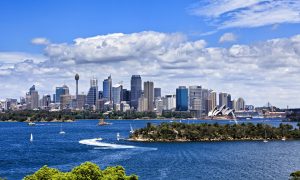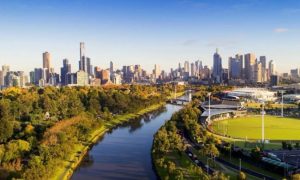In recent years,Australia's Immigration Policyin constant adjustment and updating. For the programimmigrantsFor those in Australia, it is vital to understand the latest migration policies and visa options. In this article, we will unveil the latest policy changes, visa options and key steps in your migration application for Australia in 2025, helping you to be fully prepared and start your migration journey smoothly.
I. Significant changes to Australia's migration policy in 2025
In 2025, the Australian Government has made several key adjustments and improvements to migration policy, notably in the following areasskilled migrantFamily class immigrants,investment immigrationand areas such as regional immigration. These changes not only affect the application requirements, but may also alter the difficulty of applying and the review criteria for some immigration programs.
-
Further tightening of skilled migration policies
Australia continues to emphasize the importance of skilled migration, especially in a number of high-demand occupations such as healthcare, IT, engineering and construction. However, the requirements for skilled migration in 2025 become more stringent, with applicants needing to meet higher English language requirements and the age limit likely to be further tightened. In general, skilled migration applicants must be under 45 years of age, have at least 3 years of relevant work experience and pass a vocational assessment. -
More flexible immigration policies for spouses and families
The Australian government has further relaxed the conditions for spouse visas and family reunion visas, particularly for spouse visas, where the government allows spouses to be able to provide more documentary evidence of their relationship, such as evidence of long term stable cohabitation, evidence of shared financial responsibility, etc. In 2025, the approval time for spouse visas has also been shortened, but it is important to note that the income and residency requirements for applying for a spouse visa will be more clearer and more financial information may be required from both spouses. -
Enhanced incentives for migration policies in remote areas
The Australian Government continues to encourage migration to remote areas. To this end, more visa options will be available in 2025 to attract skilled migrants and investors to work and settle in Australia's small and medium-sized cities and remote areas. Remote area migrants will not only enjoy more job opportunities, but may also be able to gain additional visa points and even early permanent resident (PR) status in some cases. For those migrants who wish to avoid the competition of big cities, choosing remote areas will be a very favorable option.
II. A Complete List of Australian Visa Options for 2025
There are different types of visas available to you depending on your immigration purpose, conditions and plans. Here are some of the most popular types of visas for 2025:
-
Skilled Migration Visa (SMV)
The Skilled Migration Visa is one of Australia's most popular forms of migration for applicants who have skills in occupations that are in demand in Australia.In 2025, the Skilled Migration Visa will continue to be a high-demand category, particularly in the following subclasses:- 189 Independent Skilled Migrant Visa: For applicants who are not sponsored by an employer and are required to pass a skills assessment and meet certain points criteria.
- 190 State Government Nomination Visa: You need to be nominated in a state or territory of Australia and agree to work and live in the nominated state for at least 2 years.
- 491 Remote Skilled Migrant Visa: For applicants who are willing to work and live in remote areas, with lower application requirements and higher point rewards.
-
Spouse Visa (Partner Visa)
The spouse visa is the most common migration route for applicants who are married or in a de facto relationship with an Australian citizen or permanent resident. Spouse visas are more flexible in 2025, requiring applicants to demonstrate a bona fide partnership and meet residency and financial conditions. If your spouse is already an Australian citizen or permanent resident, the process of applying for a spouse visa is relatively straightforward. -
investment immigrationVisa (Investor Visa)
For applicants wishing to obtain permanent resident status in Australia through investment, Australia'sinvestment immigrationThe program offers a number of options. 2025 will see increased scrutiny of the source of funds for investment migration to ensure that all investors' funds are legitimate and contribute to Australia's economic development. The most common investment migration visas include:
- 188A Business Innovation and Investment Visa: Requires applicants to have made a business investment in Australia and have a business background and financial capability.
- 188B Investor Visa: Suitable for applicants who have high levels of assets and are willing to make large-scale investments.
-
Student Transfer Visa (Graduate Visa)
If you have completed your studies and obtained a degree in Australia, you can apply for a Graduate Visa (485 Visa), a visa that allows you to work and live in Australia for a period of time. The Graduate Visa will provide more opportunities for international students on the migration pathway in 2025, especially for those who choose to work and gain experience in Australia, making future applications for skilled migration smoother.
Third, how to improve the success rate of Australia's migration application?
-
Improve your English
In 2025, the English language requirements will become more stringent. Whether you are a skilled migrant or a family migrant, you will need to pass an English language test (e.g. IELTS, PTE, etc.) and achieve a certain score. Improving your English will not only help you with your visa application, but will also help you adapt to working and living in Australia more quickly.
-
Strengthening vocational assessment
Most skilled migration visas require an occupational assessment. This means that applicants must submit their academic and work experience documents to the relevant Australian vocational assessment body. Ensuring that these documents are accurate and meet the assessment requirements will significantly improve the success of your application. -
Choosing the right type of visa
Choosing the most appropriate visa type for your background and needs is crucial. If you are in high demand in a skilled field, choosing a skilled migration visa will be optimal; if you are married or related to an Australian citizen, a spouse visa will provide you with a more direct migration pathway. -
Plan your finances in advance
Many immigrant visas, such as the Immigrant Investor Visa, require applicants to have a certain level of financial ability and financial support. Before applying, make sure your financial situation meets the requirements and have the relevant supporting documents ready.
IV. Summary
2025.Australia's Immigration PolicyThe adjustments further increase the attraction of highly skilled people, while also encouraging migrants to move to remote areas. Whether you choose to migrate as a skilled migrant, family migrant or investor, being aware of the latest immigration policies and visa requirements will be the key to success. By improving your English language skills, enhancing your vocational assessment, choosing the right type of visa and making financial preparations, you will be able to successfully realize the benefits ofImmigration to AustraliaDream and start a new chapter of your life.






